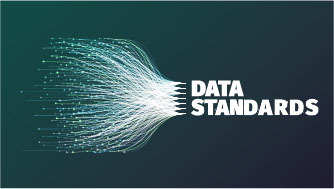Preparing Genomic Data for NCI Repositories

NCI data sets strive to achieve Findable, Accessible, Interoperable, and Reproducible (FAIR) data standards. Conforming data to NCI expectations ensures data can be reused, support the quality and usefulness of the submitted data sets, and create a more efficient process.
Note: Depending on how the data set is funded (intramural, extramural, non-NIH funded), submission instructions will vary.
Genomic data sets should be prepared as follows:
- Clean the data before it is submitted (e.g., the analytical data set is finalized)
- Submit data pertinent to the interpretation and reproducibility of the data including:
- Associated phenotype data (e.g., clinical, demographic information)
- Exposure data
- Descriptive information (e.g., protocol or methodologies used)
- Metadata around the experiment or study and annotations that are necessary to reproduce any published table or analysis must be included with genomic data submissions
- Linked terms for disease, cell type, tissue type, and other annotations to the NCI Thesaurus (NCIt)
- Identifiers, such as Uniform Medical Language Systems (UMLS) or an ontology term from an existing ontology, if an NCIt identifier is not available
- Common Data Elements (CDEs) wherever possible. For clinical specimens, the same data elements reported to clinicaltrials.gov are required
- Detail specimen acquisition, experimental procedures, and data processing and analysis methods (e.g., alignment algorithms, software versions, etc.) with your data submission
For detailed information on the timeline and process for data submission and release based on the level of data, review the Supplemental Information to the NIH Genomic Data Sharing Policy.
File Formats for Submitting Genomic Data
Data types undergo different levels of data processing and will determine expectations for data submission and release. Work with the Program Officer to determine specific data submission requirements as they may differ based on individual program and data type.
The GDS Policy provides guidance by level of genomic data:
- Level 0: Raw data generated directly from the instrument platform (this data would not be accepted by NCI repositories)
- Level 1: Initial sequence reads, the most fundamental form of the data after the basic translation of raw input
- Level 2: Data after an initial round of analysis or computation to clean the data and assess basic quality measures
- Level 3: Analysis to identify genetic variants, gene expression patterns, or other features of the data set
- Level 4: Final analysis that relates the genomic data to phenotype or other biological states
Metadata should be submitted to share on an unrestricted basis concurrent with the relevant Level 1, 2, 3, or 4 genomic data. Metadata can include information around the experiment or study, or necessary information to interpret controlled-access genomic data, such as study protocols, data instruments, and survey tools.
Data Types by Level
This table describes examples for each level. NIH will review these expectations at regular intervals, publish updates on the GDS website, and notify the research community through appropriate communication methods (e.g., NIH Guide for Grants and Contracts).
| Data Type | Level 1 | Level 2 | Level 3 | Level 4 |
|---|---|---|---|---|
| SNP array data from > 500K single nucleotide polymorphisms (SNPs) (e.g., GWAS data) |
Note: submission of .IDAT files for human sample data will be decided on a case-by-case basis | N/A | .TXT | .TXT |
| DNA sequence data from < 100 genes or regions of interest (e.g., targeted sequencing) | N/A | .BAM | Arrays:
NGS:
| .TXT |
| DNA sequence data from ≥ 100 genes, regions of interest (e.g., targeted sequencing, whole exome sequencing, whole genome sequencing) | N/A | .BAM | Arrays:
NGS:
| .TXT |
| RNA sequencing (RNA-seq) data (e.g., transcriptomic and targeting RNAseq data) |
Note: required for human sample data only | N/A | Arrays:
NGS:
| .TXT |
| Genome-wide DNA methylation data (e.g., bisulfite sequencing data) | N/A | .BAM | Arrays:
NGS:
| |
| Genome-wide chromatin immunoprecipitation sequencing (ChIP-seq) data (e.g., transcription factor ChIP-seq, histone modification ChIP-seq) | N/A | .BAM | Arrays:
NGS:
| .TXT |
| Metagenome (or microbiome) sequencing data (e.g., 16S rRNA sequencing, shotgun metagenomics, whole-genome microbial sequencing) | N/A | .BAM | NGS:
| .TXT |
| Metatranscriptome sequencing data (e.g., microbial/microbiome transcriptomics) | N/A | .BAM | NGS:
| .TXT |
Note: Metadata or other data pertinent to the interpretation of genomic data—such as associated phenotype data (e.g., clinical information), exposure data, and descriptive information (e.g., protocol or methodologies used) should be shared. Metadata around the experiment or study and annotations that are necessary to reproduce any published table or analysis must be included with genomic data submissions.
For additional examples of data that falls under the scope of the GDS policy, review Supplemental Information to the NIH Genomic Data Sharing Policy.
